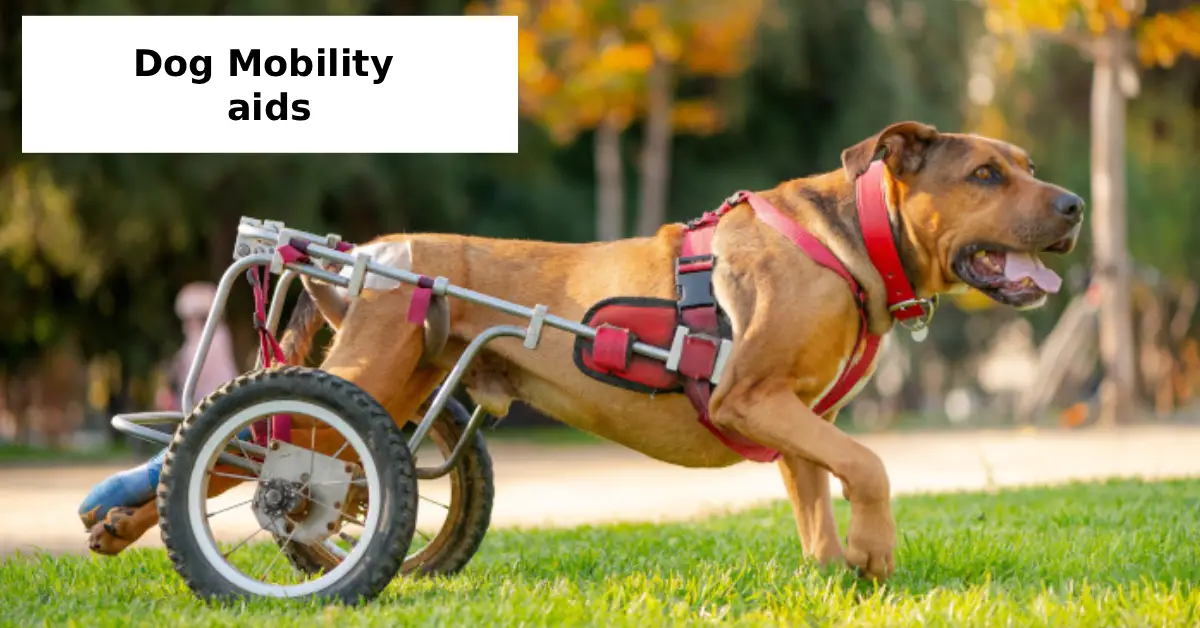Mobility issues in dogs—whether due to aging, injury, surgery, or genetic conditions—can significantly impact their quality of life. Fortunately, dog mobility aids like wheelchairs, slings, and support harnesses offer renewed independence and comfort. But getting your furry friend to accept and adapt to these tools isn’t always easy. This blog offers practical, vet-approved strategies for helping dogs with mobility issues, covering everything from dog wheelchair training to canine mobility support tips that improve both comfort and confidence.
Why Dogs Need Mobility Aids
Senior dogs, dogs with arthritis, and those recovering from injuries or surgery often face mobility challenges. Conditions like hip dysplasia, degenerative myelopathy, and spinal injuries can make walking difficult or even painful. According to the American Veterinary Medical Association (AVMA), early intervention and mobility support can significantly improve a pet’s physical and emotional well-being.
That’s where dog mobility aids come into play. These include wheelchairs, leg braces, support slings, and other dog rehabilitation equipment. Used correctly, they help maintain independence, encourage physical activity, and improve overall health.
Types of Dog Mobility Aids
Understanding what type of aid is best suited for your dog is the first step in providing effective support:
- Dog Wheelchairs: Ideal for dogs with hind leg paralysis or weakness.
- Support Slings & Harnesses: Useful for assisting dogs with partial mobility or balance issues.
- Leg Braces: Provide dog hind leg support and joint stabilization.
- Boots & Paw Protectors: Prevent paw dragging and injuries in dogs with neurological conditions.
- Dog Ramps and Steps: Help dogs avoid jumping onto furniture or into cars.
Each of these devices has its specific use case and benefits. Always consult with veterinarians or pet physical therapists to select the most appropriate gear for your dog’s condition.
How to Help Your Dog Adjust to Mobility Aids
Helping your dog adjust to mobility aids requires patience, positive reinforcement, and step-by-step training. Here’s a complete approach:
1. Start with Short, Positive Sessions
When introducing any new mobility aid, first-time users of dog mobility aids should begin slowly. Use treats and praise during brief trial sessions to help your dog associate the aid with positive experiences. Avoid forcing your pet into the equipment.
2. Make It Comfortable
Before expecting your dog to move, ensure the aid is adjusted correctly. Ill-fitting gear can cause discomfort or even injury. Whether it’s a wheelchair or a support sling, make sure it’s snug but not tight. For example, if you’re exploring dog arthritis mobility solutions, a well-padded brace can make a big difference.
3. Introduce Movement Gradually
Once your dog is comfortable wearing the aid, encourage slow movements in a familiar environment. If you’re wondering how to help dog use wheelchair, start by guiding them a few steps at a time and slowly build up distance and duration.
4. Use Verbal Cues and Commands
Just like obedience training, consistent verbal commands help dogs understand what’s expected. Use simple cues like “let’s go,” “stop,” or “turn” during your dog wheelchair training.
5. Encourage Outdoor Exploration
Take your dog outside for fresh air and new sights. Many dogs get excited by the outdoors and will be more motivated to move when they see birds, people, or fellow dogs.
6. Monitor and Adjust as Needed
Every dog reacts differently. Regularly check for signs of discomfort, chafing, or loss of interest. Keep a journal or video log to track progress and share updates with your vet or canine therapist.
7. Combine With Rehabilitation Exercises
Mobility aids work best alongside physical therapy. Incorporate gentle exercises or hydrotherapy if recommended. This holistic approach speeds up recovery and strengthens muscles. For pet parents of injured dogs, this dual strategy is particularly effective.
Common Challenges & How to Overcome Them
Even with the best gear and intentions, challenges may arise. Here’s how to tackle common issues:
- Fear or Anxiety: Use calming treats or a pheromone diffuser.
- Immobility or Stubbornness: Sometimes the aid feels strange; give it time and lots of encouragement.
- Chafing or Skin Irritation: Check the fit and add soft padding.
- Excessive Fatigue: Your dog may need shorter sessions initially.
Dog rescue organizations and disabled pet support communities are great resources for support and shared experiences.
Real-Life Scenarios
- A senior dog owner in California reported that her 12-year-old Golden Retriever gained new energy after adapting to a rear support wheelchair.
- A member of an online pet care blog commented that her Labrador post-ACL surgery adapted to his harness within a week using daily treat-reward routines.
- A dog wheelchair buyer in New York said her Rottweiler with hip dysplasia began enjoying walks again after a month of gradual training.
Expert Tips for Long-Term Success
- Stay Consistent: Daily training builds familiarity.
- Check Fit Regularly: Dogs may gain/lose weight or muscle mass.
- Regular Vet Visits: Periodic assessments ensure continued suitability.
- Social Interaction: Include your dog in normal activities to keep morale high.
- Proper Cleaning: Maintain hygiene to prevent infections or odor buildup.
Emotional Support for Dogs and Owners
Adjusting to mobility aids isn’t just a physical transition—it’s emotional too. Dogs may feel anxious or embarrassed, and pet owners dealing with canine arthritis or degenerative diseases often feel helpless. Support your pet emotionally with extra love, cuddles, and playtime.
Don’t hesitate to seek support yourself. Disabled pet support communities offer forums, Facebook groups, and local meetups where you can connect with others navigating similar challenges.
When to Consult a Professional
If you notice any of the following, it’s time to seek professional help:
- Your dog refuses to move with the aid after two weeks.
- You see sores or signs of injury.
- Your dog shows signs of depression or severe stress.
- You suspect the aid is no longer helping or worsening the condition.
Your veterinarian or pet physical therapist can reassess and recommend changes or alternatives.
Helpful Resources
- Common dog diseases – Learn about conditions that may require mobility aids.
- Dog Wheelchair Buyer’s Guide – Trusted supplier for canine wheelchairs and mobility equipment.
- Pet Rehab Centers Near You – Locate physical therapists who specialize in pet care.
Final Thoughts
Helping your dog adjust to mobility aids may seem daunting, but with patience, training, and the right support system, your furry friend can lead a joyful and active life. From wheelchairs to braces, the goal of canine mobility support tips is not just movement—but happiness, confidence, and connection.
Whether you’re a first-time user of dog mobility aids or an experienced owner of a large breed dog prone to hip dysplasia, the journey is worth every step. Let love and persistence guide you—and soon, those wagging tails will follow.






1 thought on “How to Help Your Dog Adjust to Mobility Aids”